Sailing along the Costa del Sol
Mediterranean winds
Our next hop was to the Balearic Islands. However, once again, we were now on a schedule; we had a date with the TGV for travel from Marseille to Amsterdam on the 4th of July. This meant we had about three weeks to cover the 700 nm between south western Spain and Marseille.
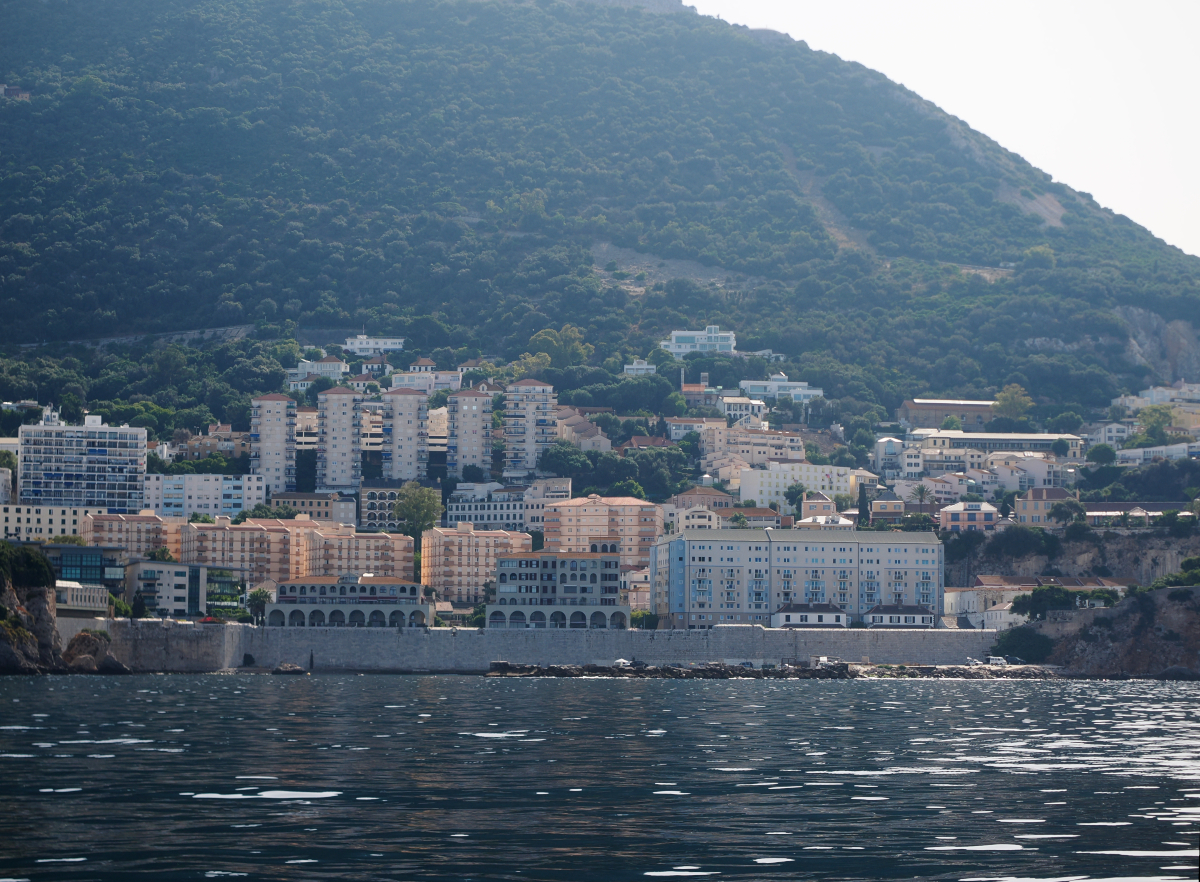
Westside, Gibraltar.
This wasn’t a tight schedule by any stretch of the imagination just as long as the Mediterranean winds cooperated. But the Levante, Tramontana and Mistral can be fickle winds, sometimes entirely absent, sometimes blowing hard across the Mediterranean. When the strong easterlies (Levante) blow, boats can get stuck in Gibraltar for weeks waiting for the winds to ease up or turn and blow them east.
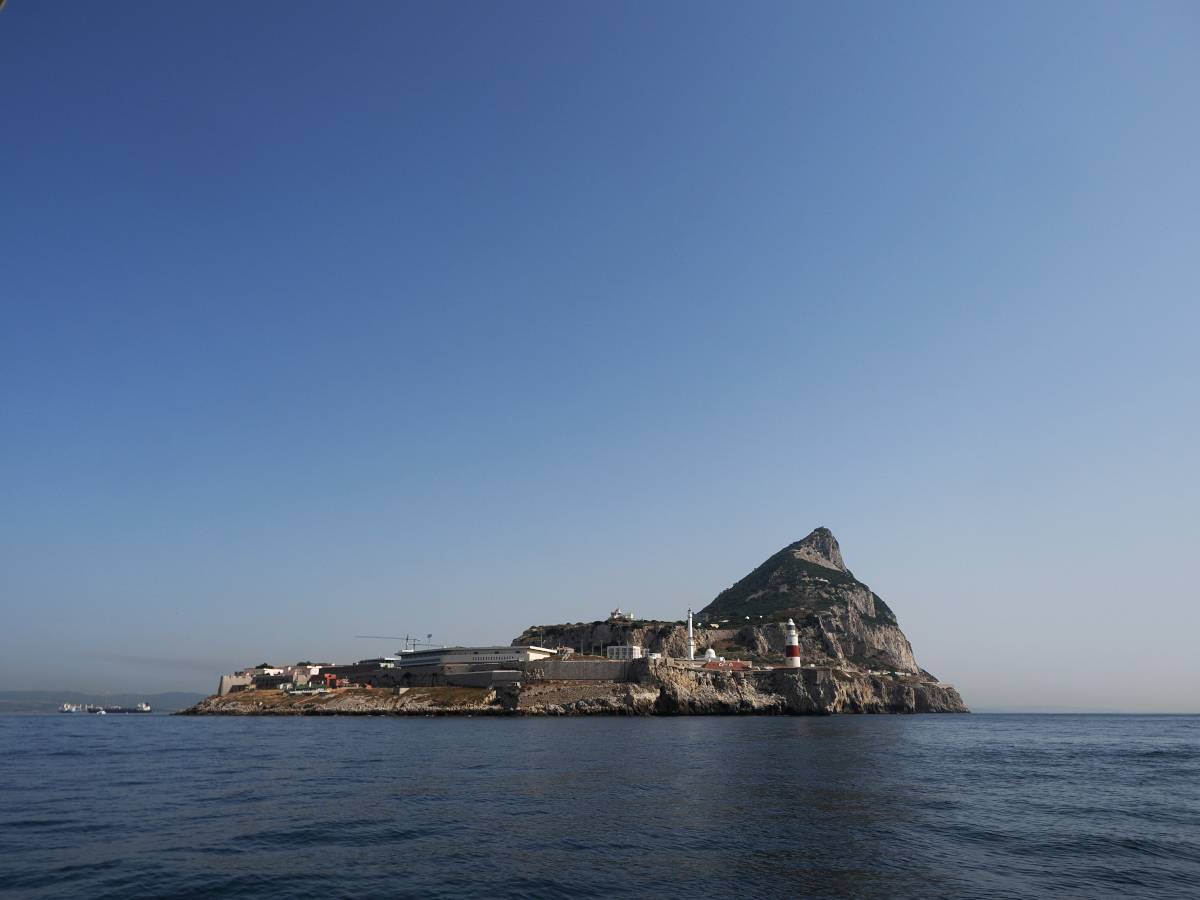
Europa Point, Gibraltar.
No winds
We ended up drawing second prize in the wind stakes – no wind for a day or two followed by strong easterlies blowing into the approaches to the Strait of Gibraltar for the remainder of the forecast period. Strong easterly headwinds blowing against an east setting current of a couple of knots sounded like a very special kind of seafaring misery that was probably best avoided.
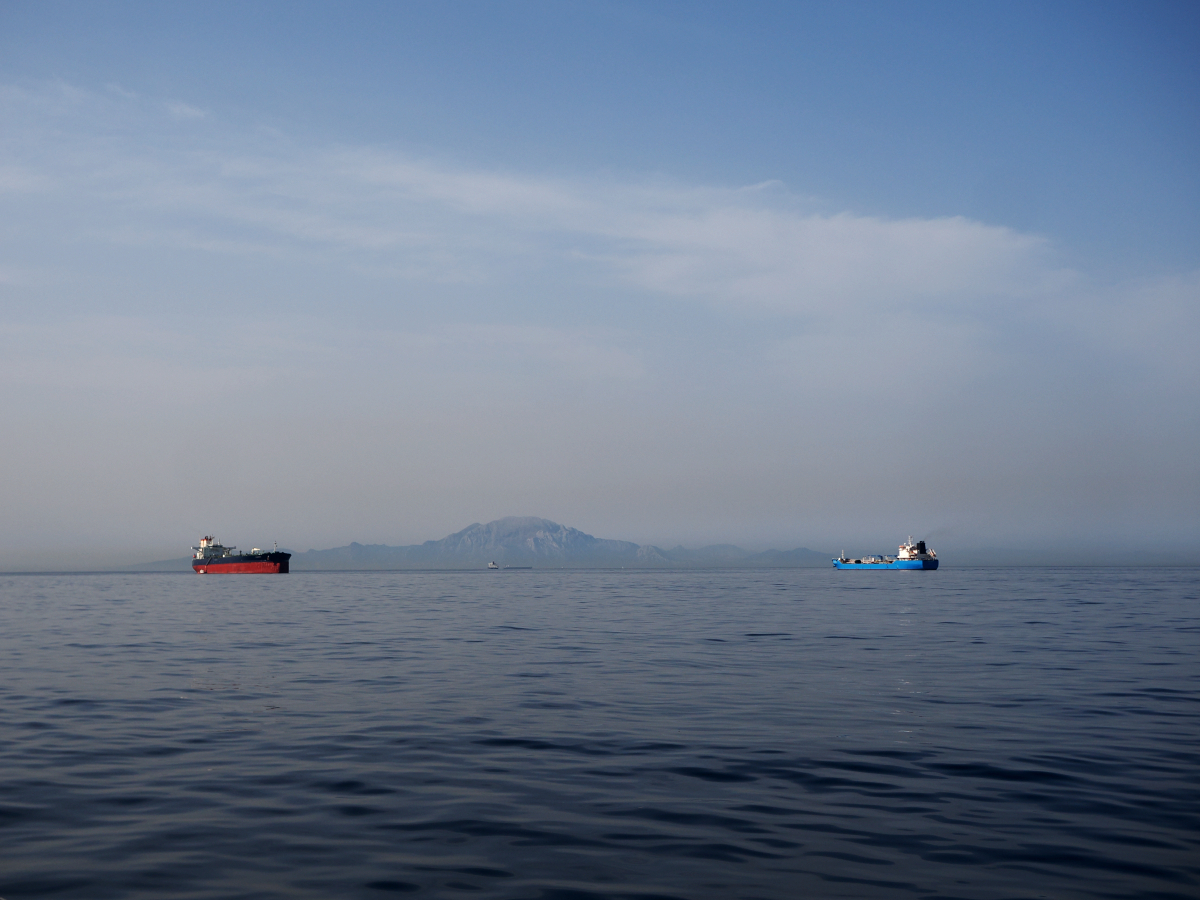
View over the shipping channel towards Morocco. Note the lack of waves, and wind.
So, instead of staying put and waiting for westerlies to blow us into the Med, we decided to depart under motor in the calms before the easterlies arrived in an attempt to get far enough north-east along the coast of Spain to avoid the easterlies and, maybe, even catch a westward eddy on the northern side of their flow. A cunning plan, indeed.
The eastern side of Gibraltar.
No more orcas, for now
Given that as soon as we rounded the Rock, we would be past Gibraltar and outside the orca risk range. ‘Outside’… In previous years orcas have attacked yachts all the way up to the Balearics. This year, however, they had not been seen at all in the Mediterranean and appeared to have past us going north when we were in Barbarte, in western Spain. This meant that most, if not all sailboats stopped hugging the coast as soon as they were past Gibraltar.
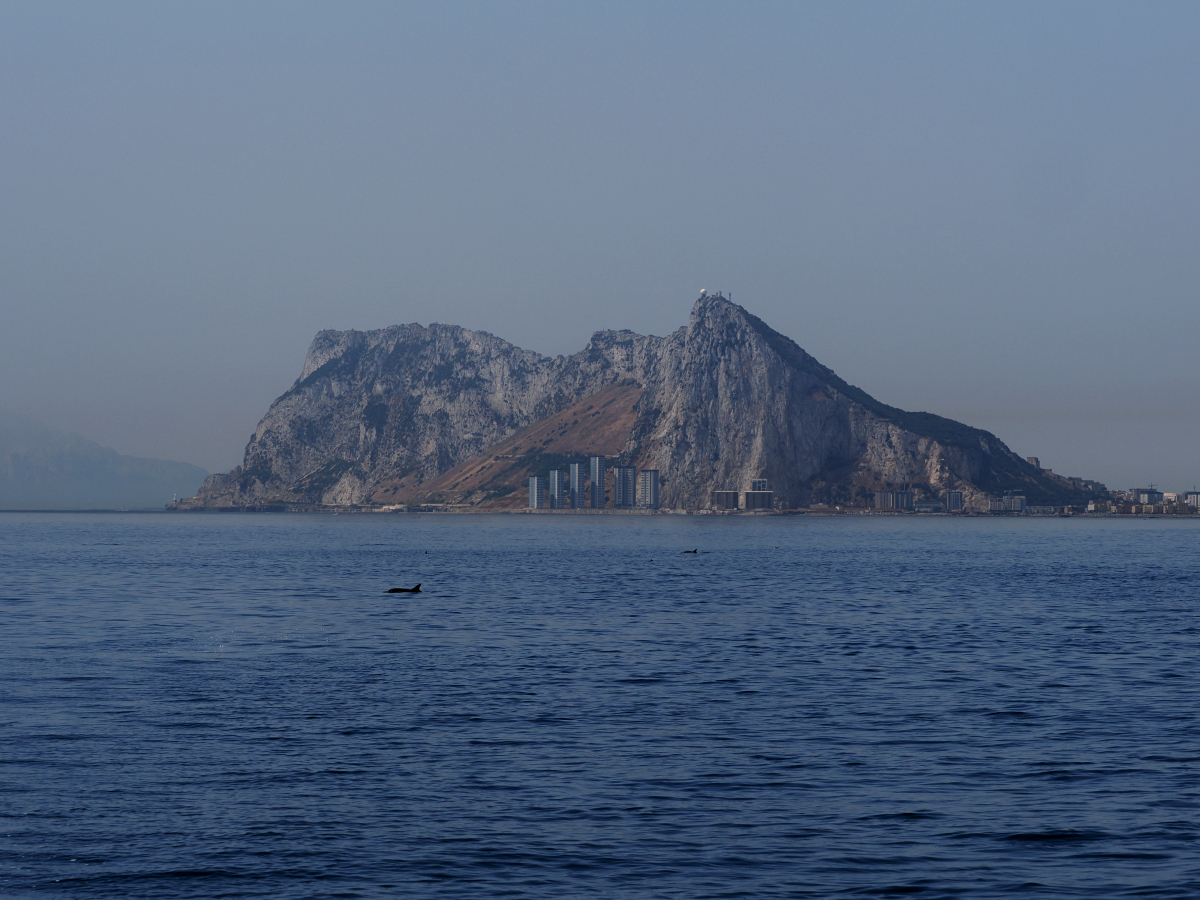
Our first dolphin encounter in the Med, not far off the Rock.
We felt a bit uneasy about doing this at first, but with no orcas having been seen west of Gibraltar for weeks, and then only just a little bit west and off shore, we decided to throw the 20m rule overboard. We’ll have to retrieve it again later this year though when we leave the Med.
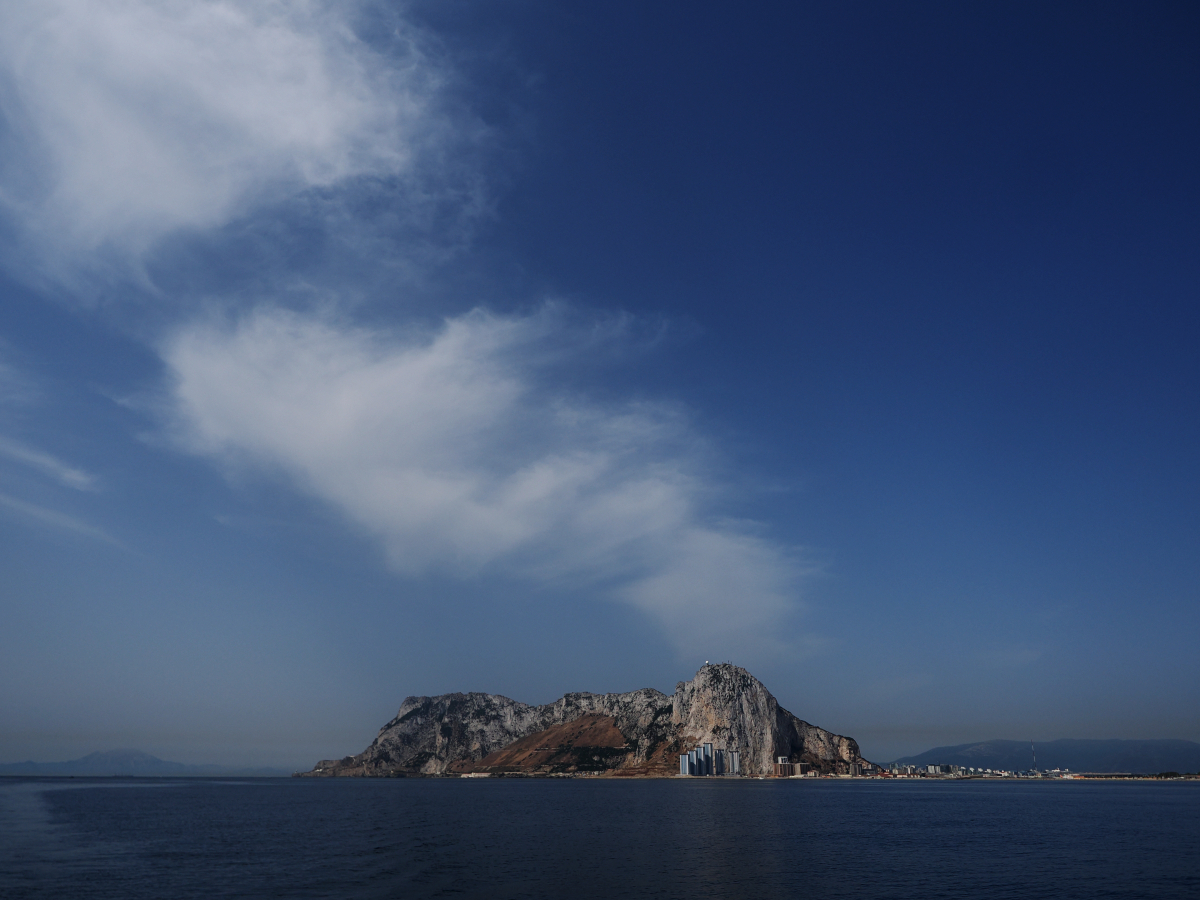
Gibraltar slowly fading away in the distance.
Other marine mammals
Aside from orcas, there are another 12 species of marine mammal in the Mediterranean, these being, sperm whales, fin whales, northern minke whales, long-finned pilot whales, Risso’s dolphins, Cuvier’s beaked whales, Blainville’s beaked whales, common bottlenose dolphins, rough-toothed dolphins, short-beaked common dolphins, striped dolphin and Mediterranean monk seals.
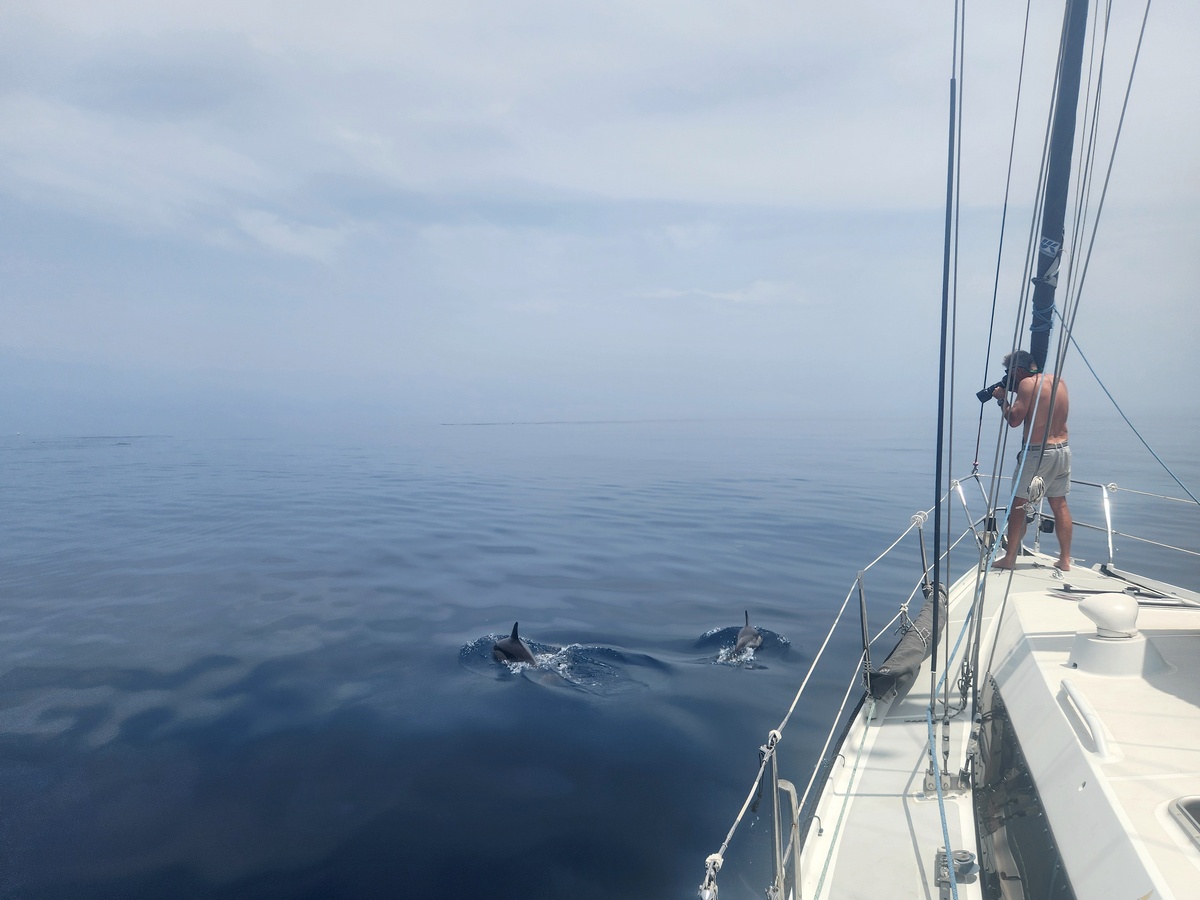
This is more like it! Short-beaked common dolphins off Yuma’s bow.
Short-beaked common dolphins
The south-east coast of Spain turned out to be rich in marine mammal life, at least in terms of abundance, if not diversity. Who would have thought that, right in between one of the busiest shipping lanes in the world and one of the world’s tourist hotspots, the Costa del Sol, the sea would be brimming with these animals, but, here they were!
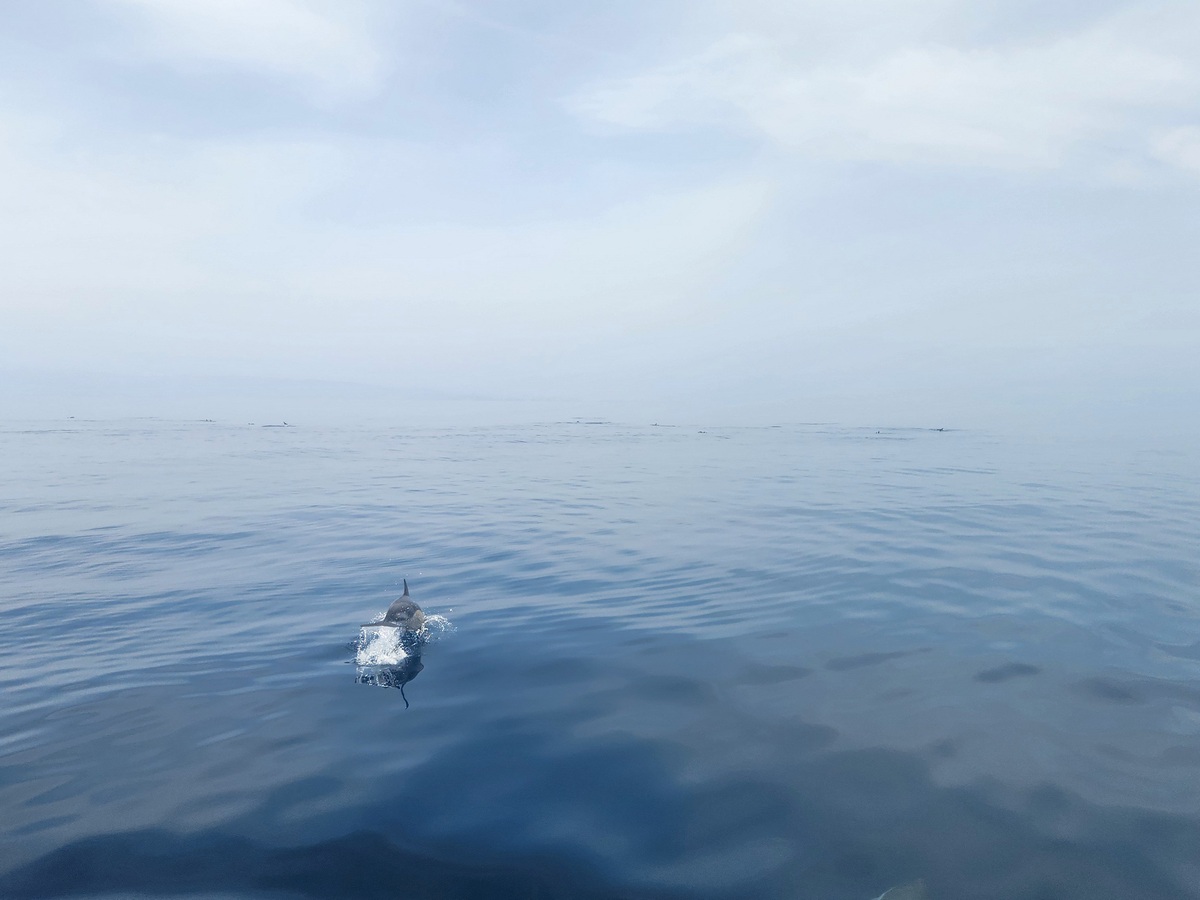
Short-beaked common dolphin looking for a bow wave in a complete glass-out.
For three days in a row, we were accompanied by large pods of short-beaked common dolphins who were all keen to catch of ride on our very meagre bow wave. On one occasion, we saw the dark dorsal fin and back of a small cetacean roll gently through the surface and dive – it’s size and shape would most likely have made it a northern minke whale.
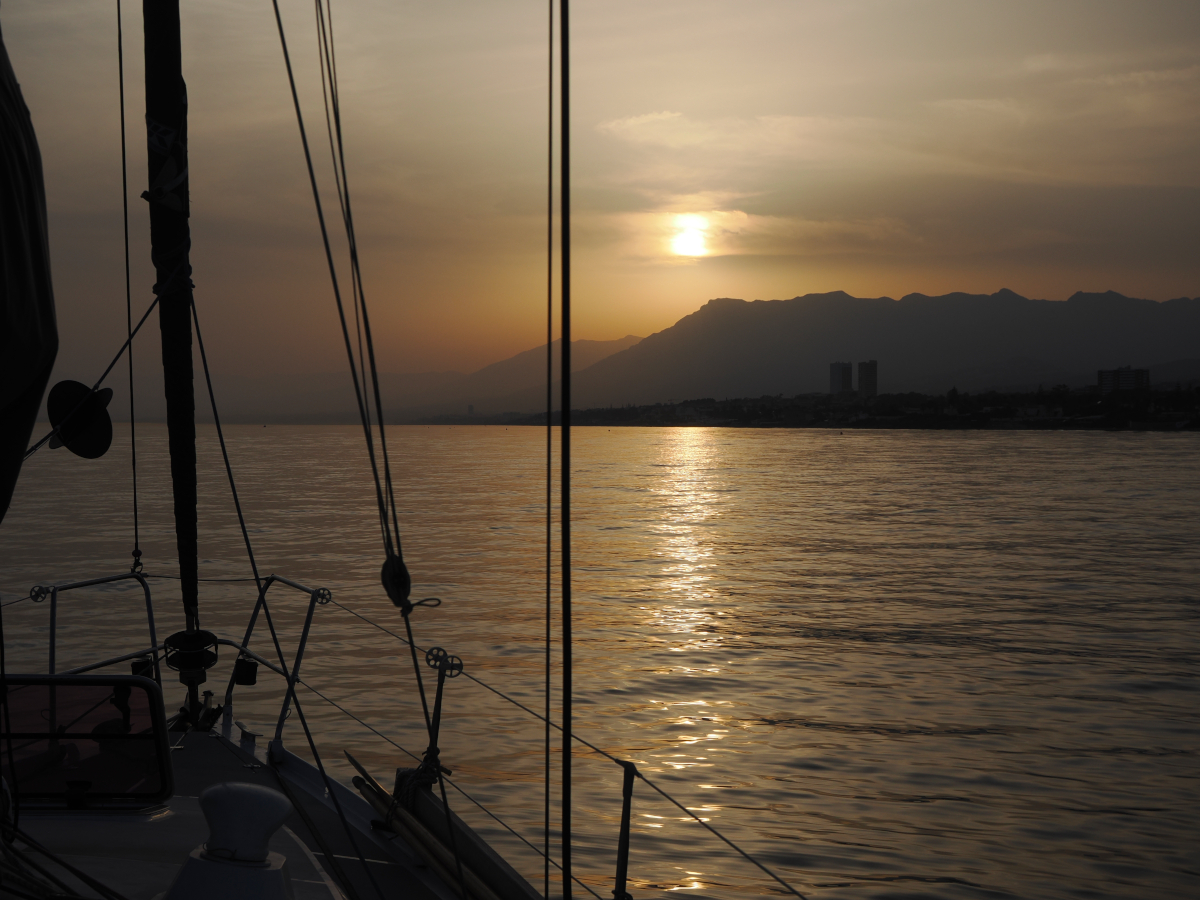
A nice sunset along the way.
Long finned pilot whales
On the third day, a small flotilla of dark bodies with floppy looking, rounded dorsal fins were lazily lolling around at the surface as if they had nothing of importance to do – long finned pilot whales!
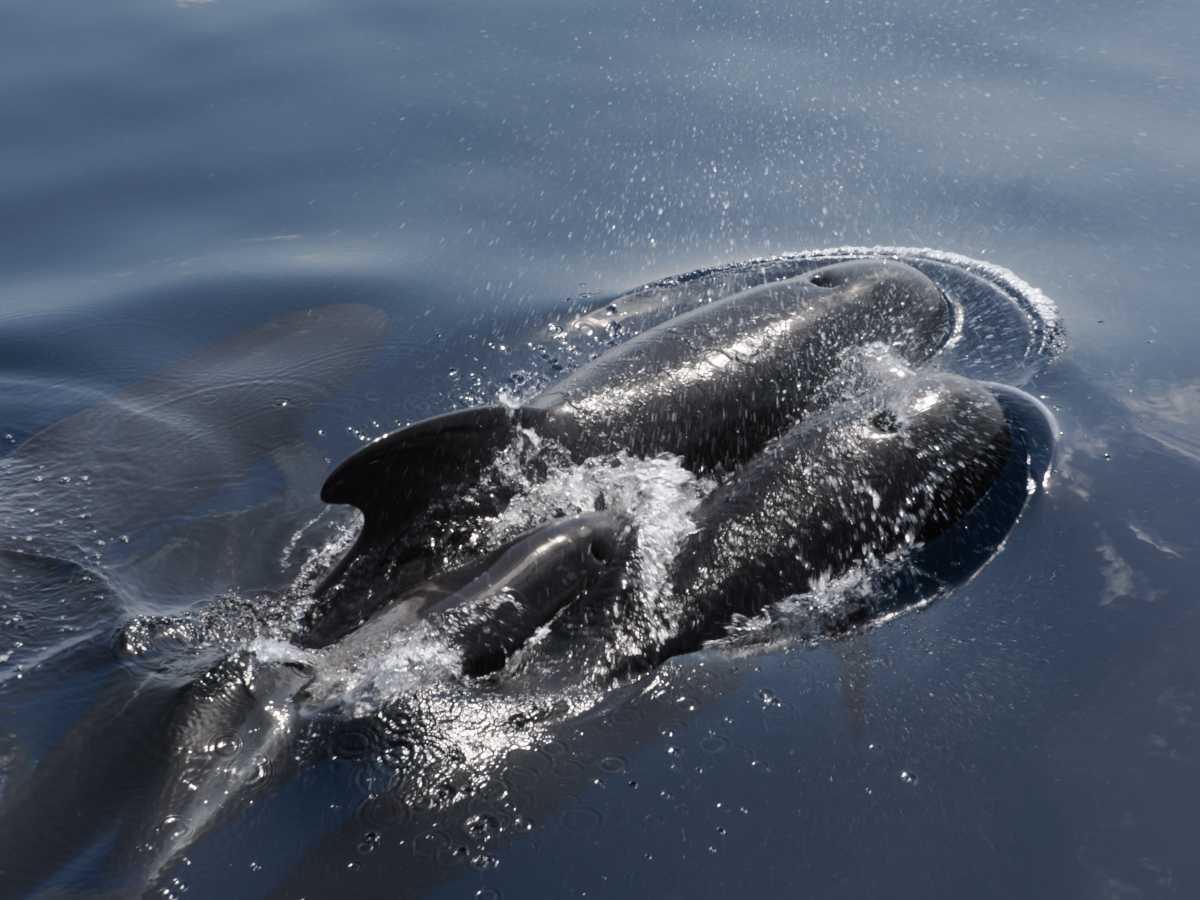
Adult with calf.
The last time we had seen this species was a brief, sunset encounter off the coast of Norway when they were heading for deep water and we were running in the other direction looking for shelter from an approaching storm. These guys are so different from other dolphin species and are so very cute!
Long finned pilot whales around Yuma.
This was a group of perhaps 40 or 50 animals and, unlike their Norwegian brethren who clearly had places to be, these guys were keen to hang around with us. Small groups of adults and calves came ambling over to the boat in tight groups, slipstreaming off each other, their bodies touching, and swam along with us, and under us, whistling away, before veering off to rearrange themselves and whistle some more.
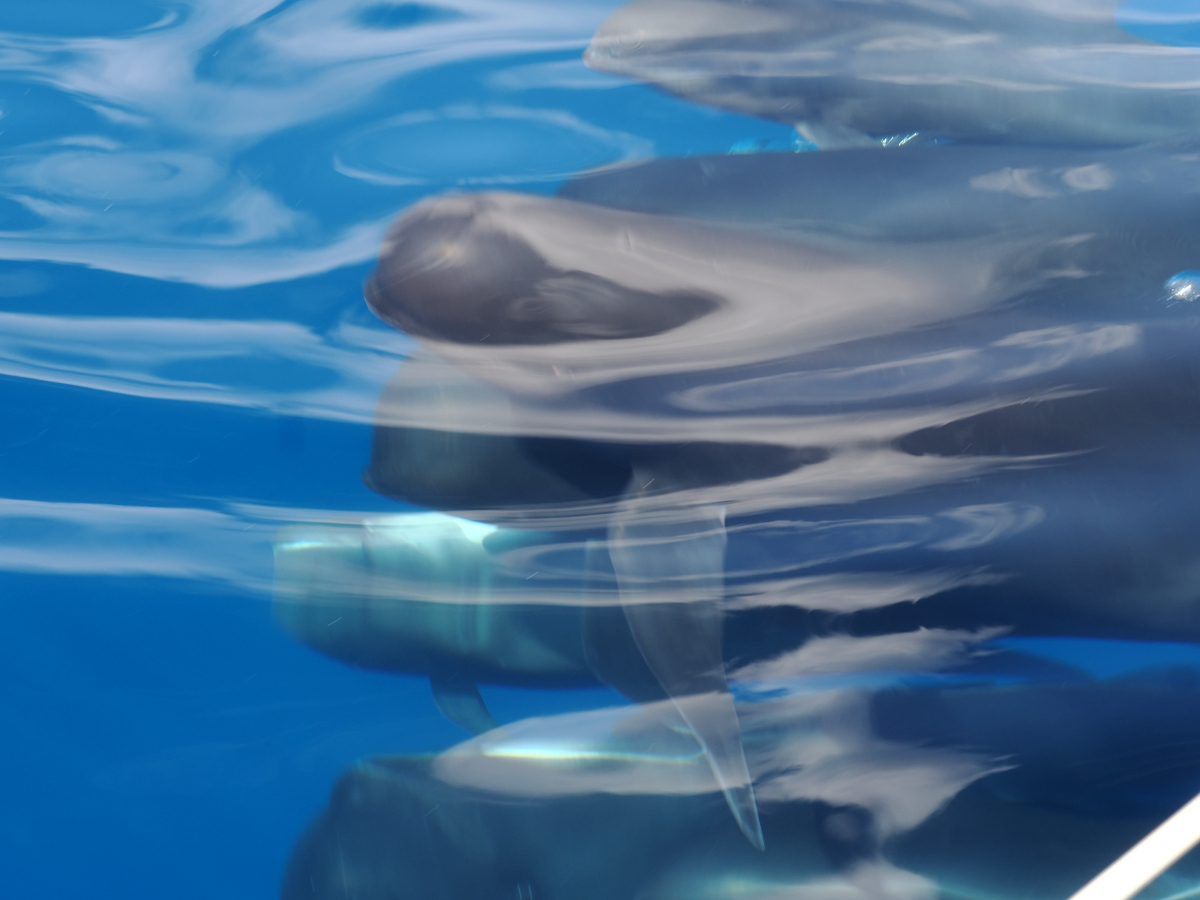
A pod up close and personal with Yuma.
Different pods would do this repeatedly, as if to acquaint the young ones with boats. This, of course, is a human interpretation so who know what they were doing. But it was very striking behaviour.
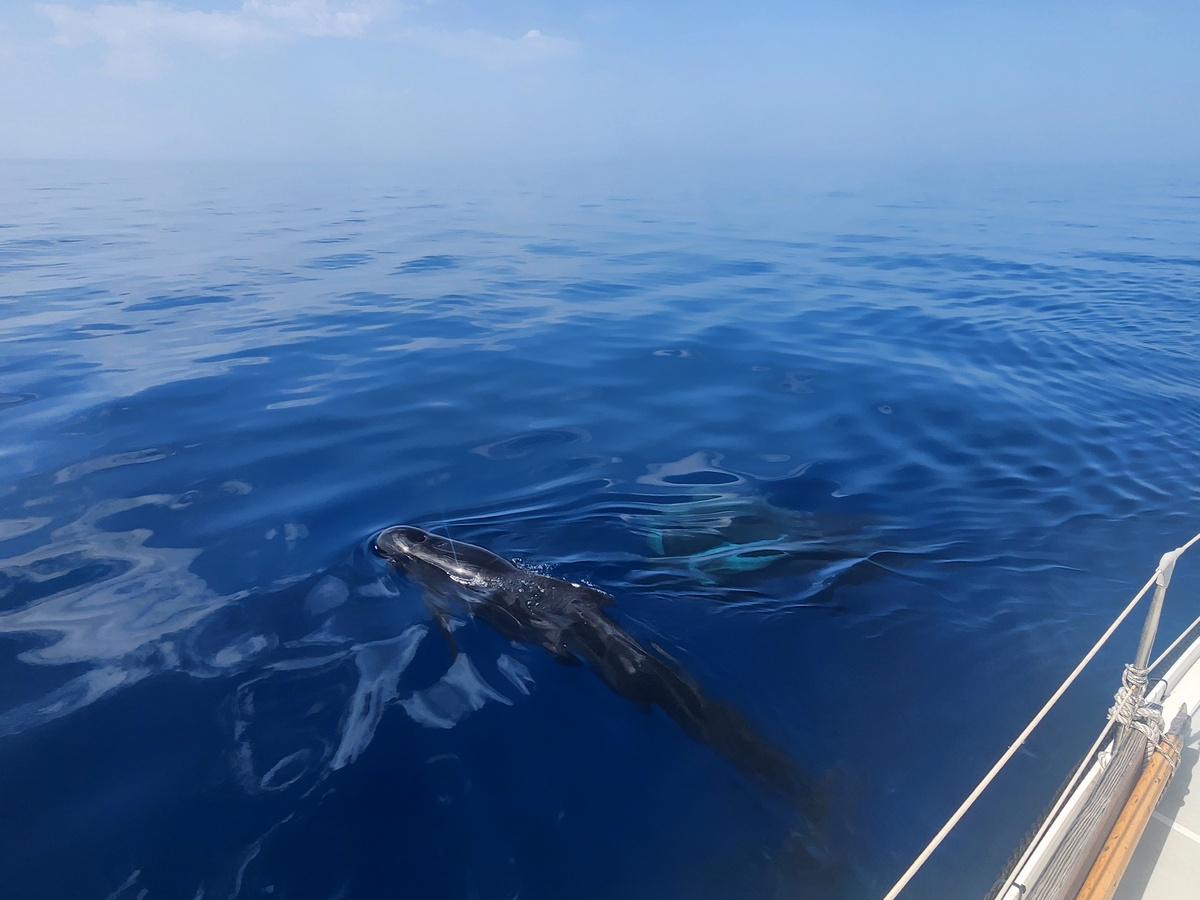
More long finned pilot whales.
Our first heatwave
All the while, it was getting hotter and hotter; we were sailing into the first European heatwave of the season. One of our plans had been to visit some of the larger cities in southern Spain, such as Málaga, Granada and/or Cordoba.
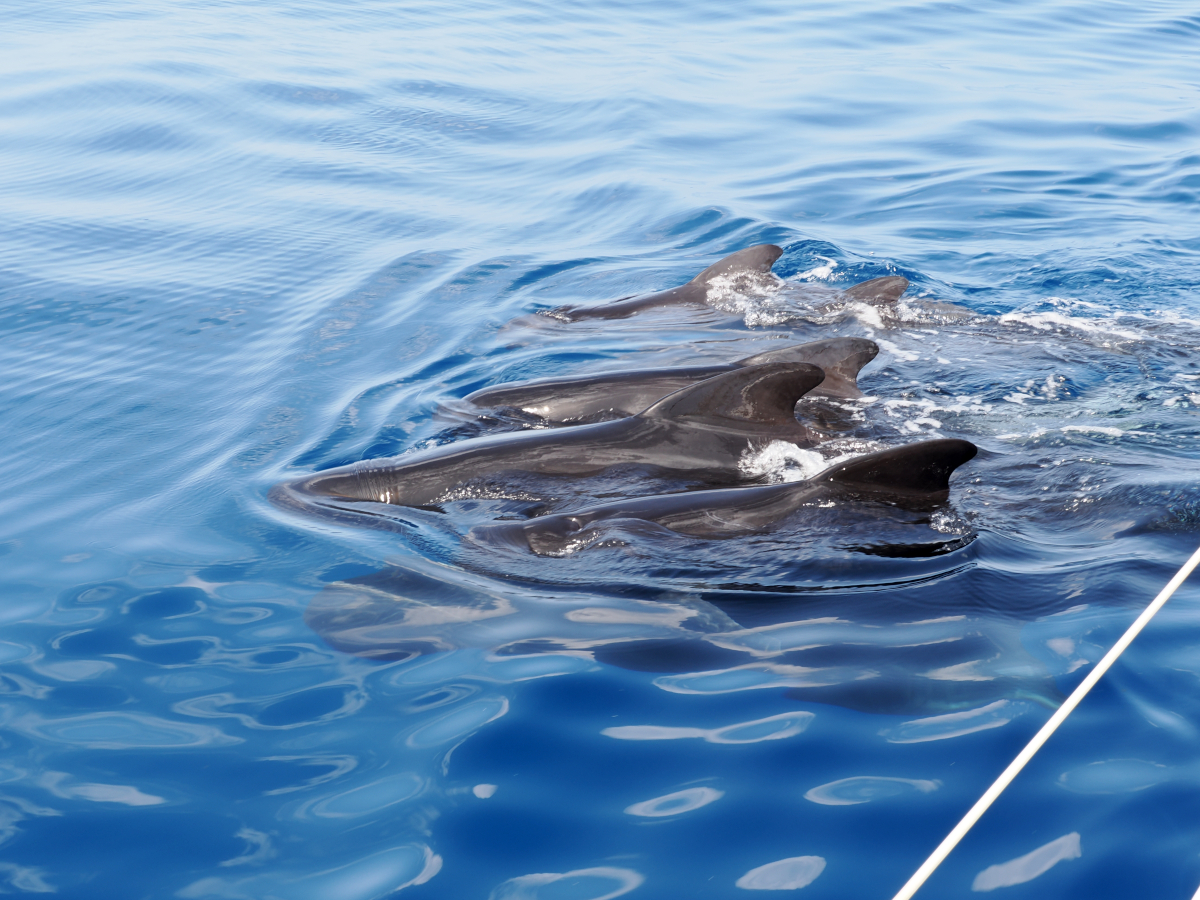
A pod huddling together after having checked out Yuma for a while.
However, with the expected 40°C temperatures we decided that being on the water might just be a bit more comfortable than being stuck in a brick city with hordes of other tourists. As it was, even in Yuma it was getting warm with temperatures up to 31°C. So, we travelled on, thinking that we would try to visit these cities another, cooler time.

Lighthouse somewhere along the Costa.
The next boat job
Yuma being a boat, something had to break along the way, of course. This time, it was one of the hoses on our water maker. A supposedly high-pressure hose sprung a leak and then began to disintegrate elsewhere along its length spraying water all over our solar panel and wind generator charge controllers. Not a good look.
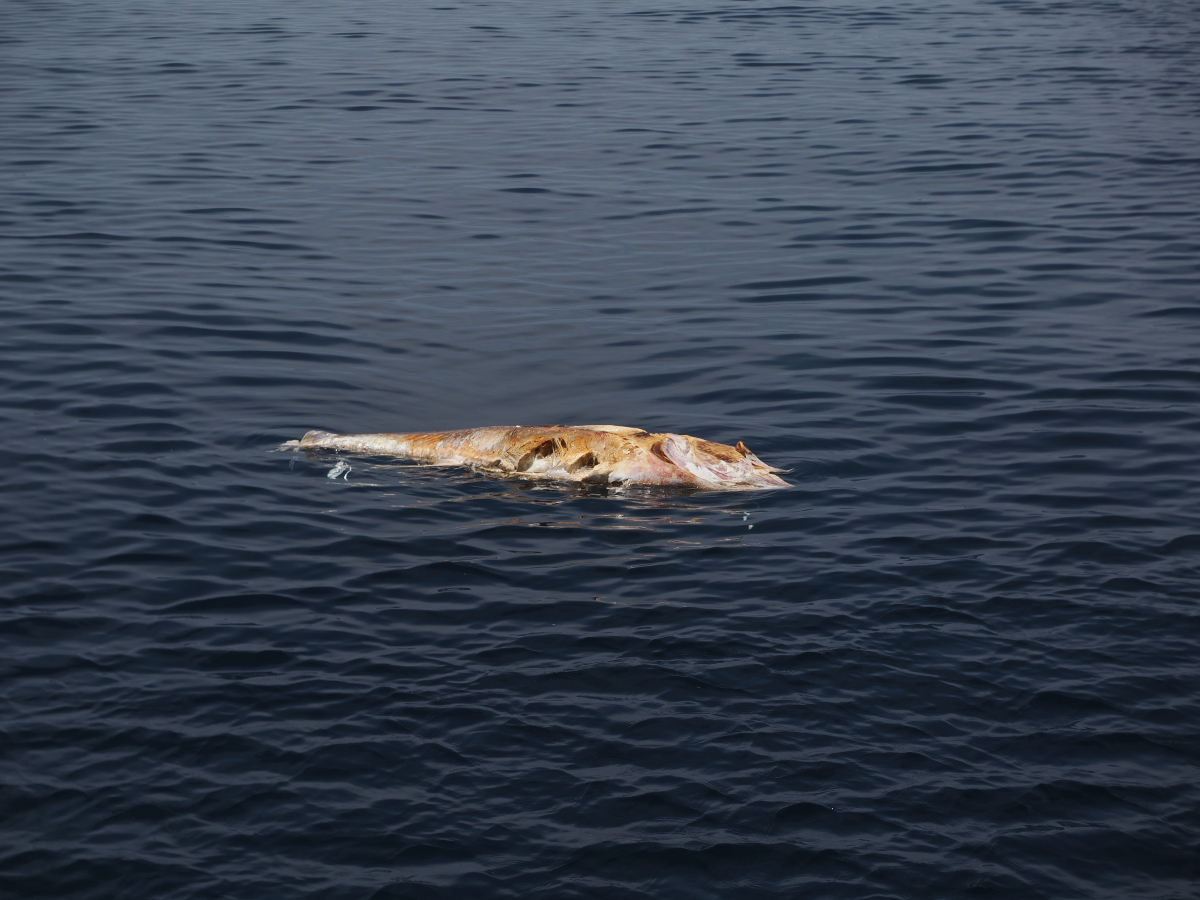
Like our waterhose, this huge dead tuna had also started to disintegrate.
We obviously needed a new hose, or rather, new hoses? On closer inspection, it turned out the (plastic) hoses installed with our water maker were not up to the required 10 bar (they were instead 6 bar) nor were they food grade. So much for getting professionals to install the water maker…
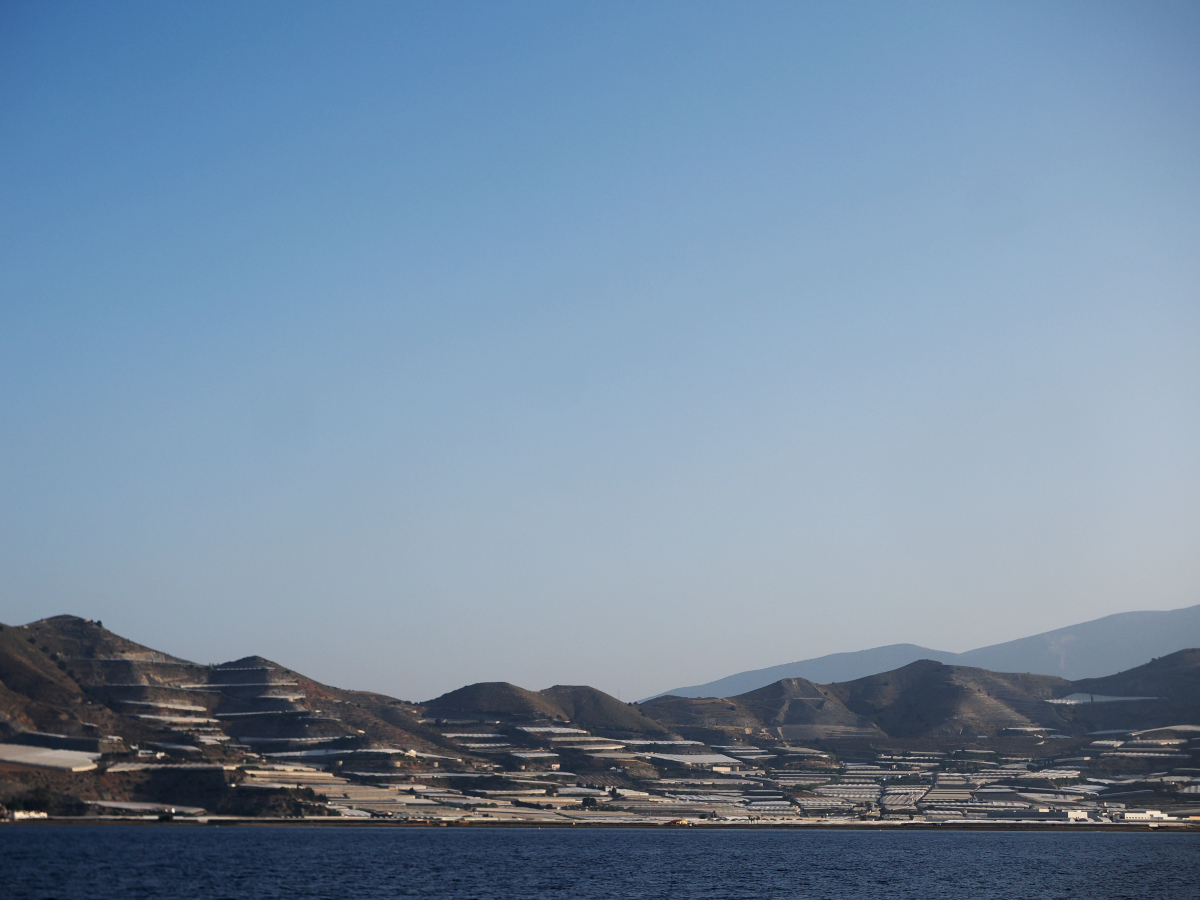
A different kind of plastic: ‘El Mar del Plástico’, or ‘Costa del Polythene’. The huge areas of plastic greenhouses near Almería on the south coast of Spain, where fruit and vegetables are grown year-round for the European market.
We popped into the marina at Almerimar where David had found a chandlery that sold the right kind of hoses. Appropriate hoses purchased and installed we then spent the rest of the day getting ready for the 2-day crossing to Ibiza. The costs of the hoses were reimbursed by the original (Dutch) installer, but an apology for using the incorrect hoses and causing us all this hassle, is still forthcoming. How very typical and how very Dutch. Thank goodness this happened in a place where we could easily get replacement parts and repair the damage, and not somewhere in the middle of an ocean crossing. Lesson learnt: carry some spare hose.


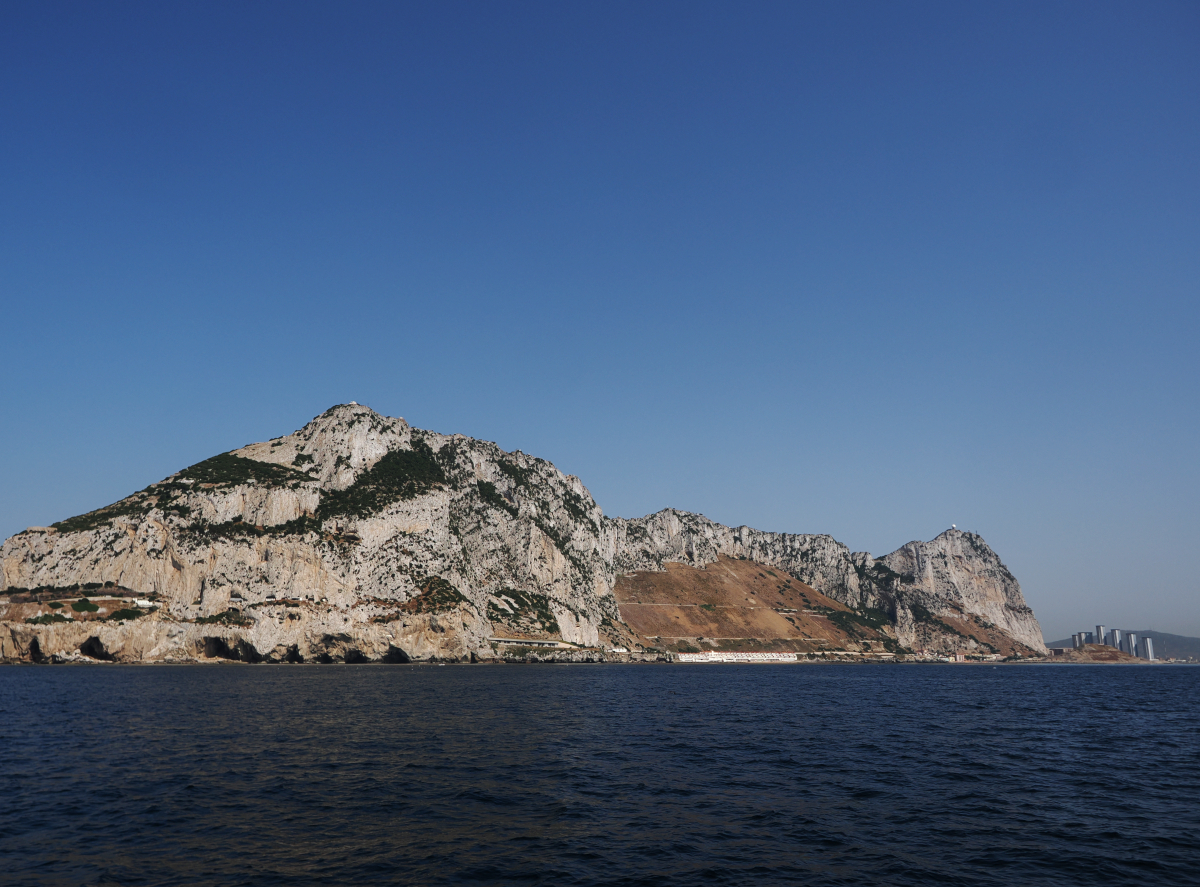
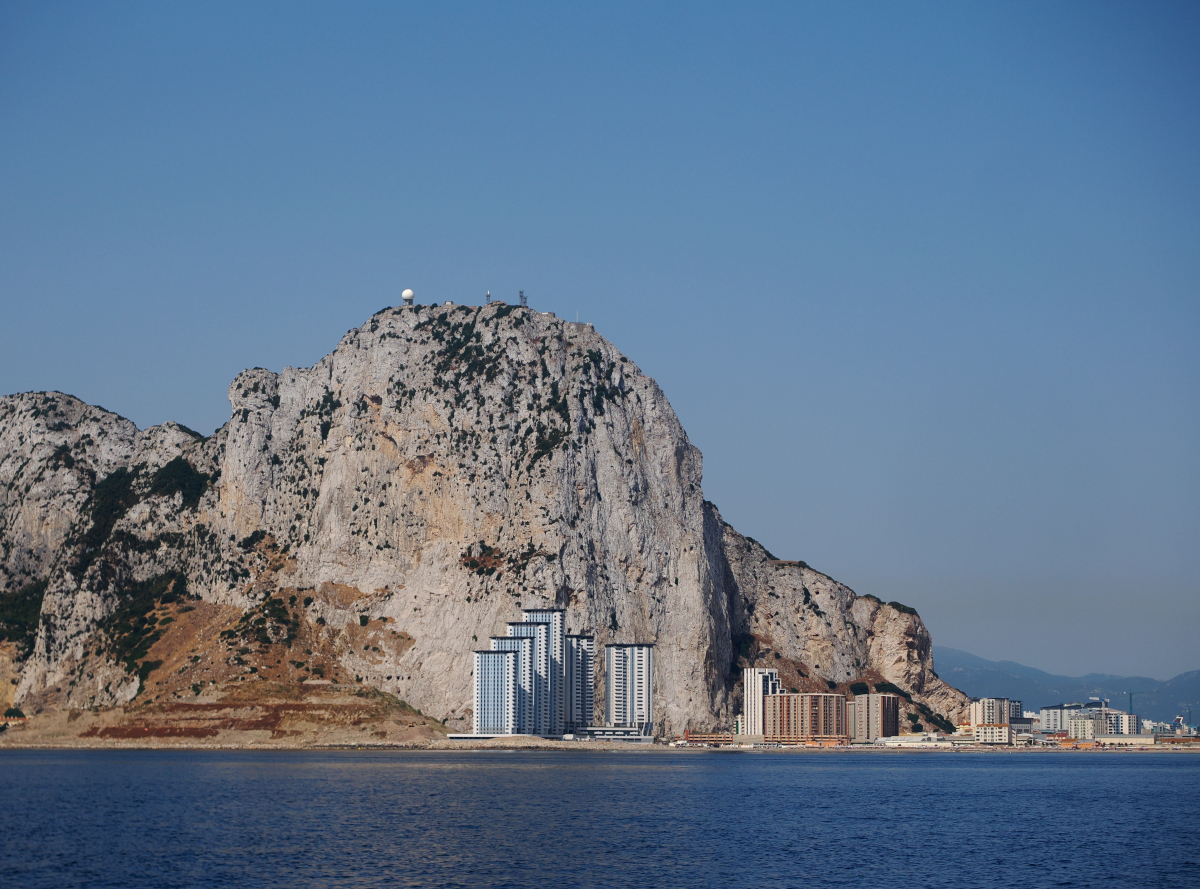
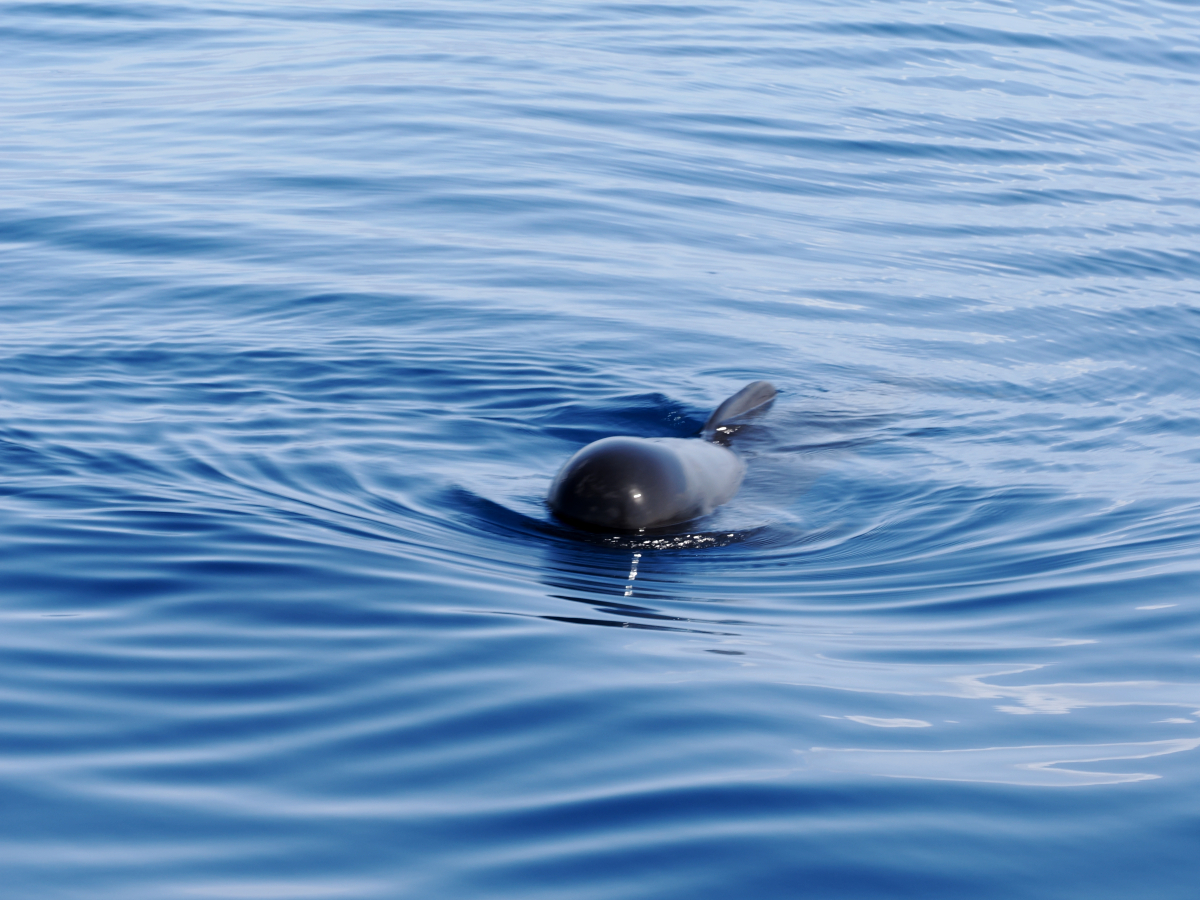
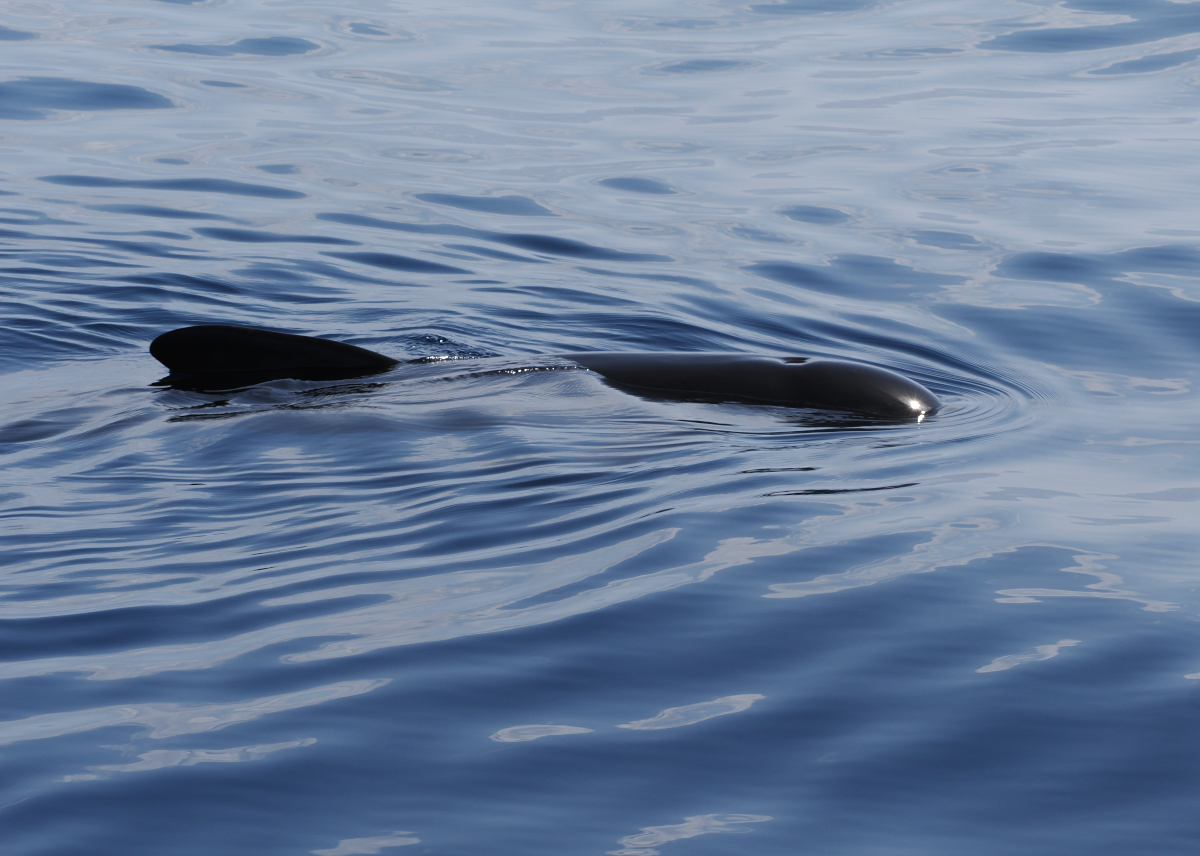
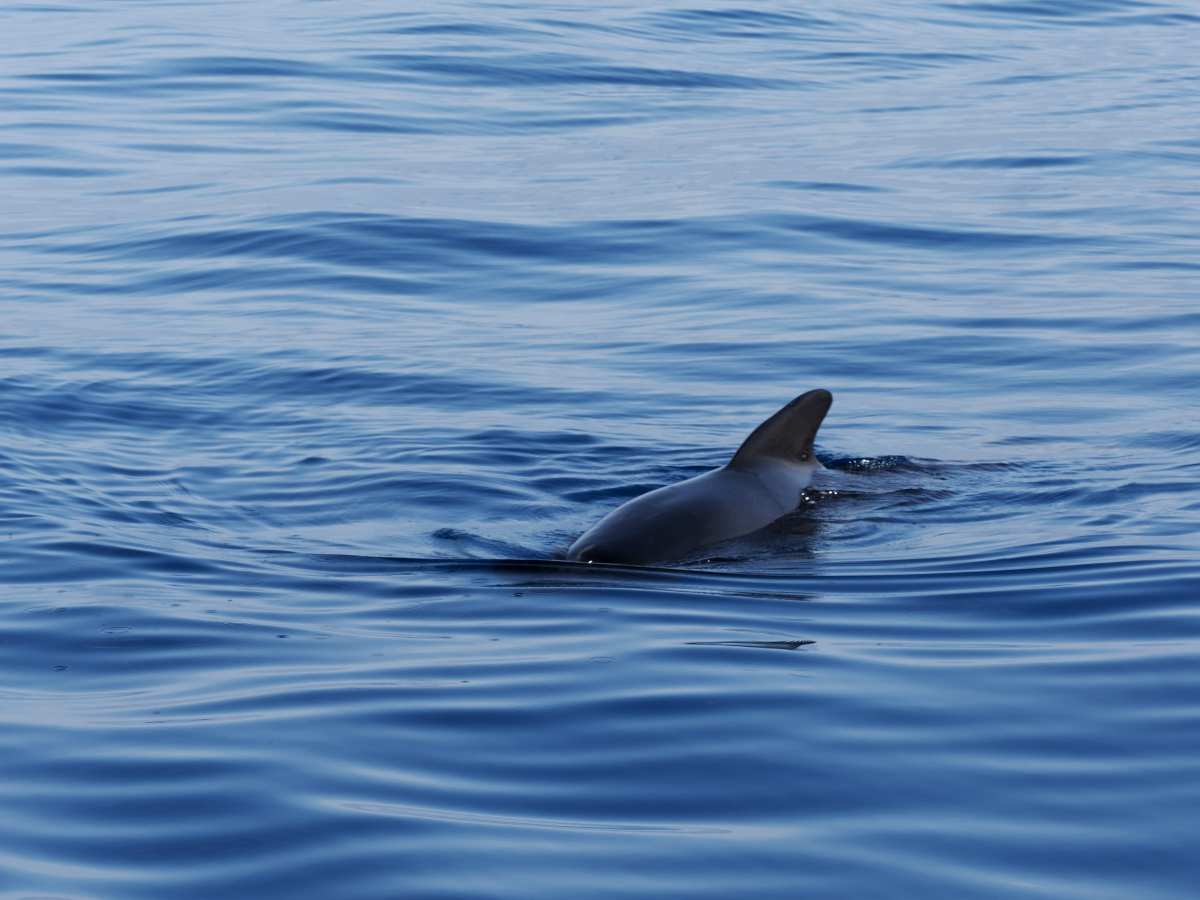
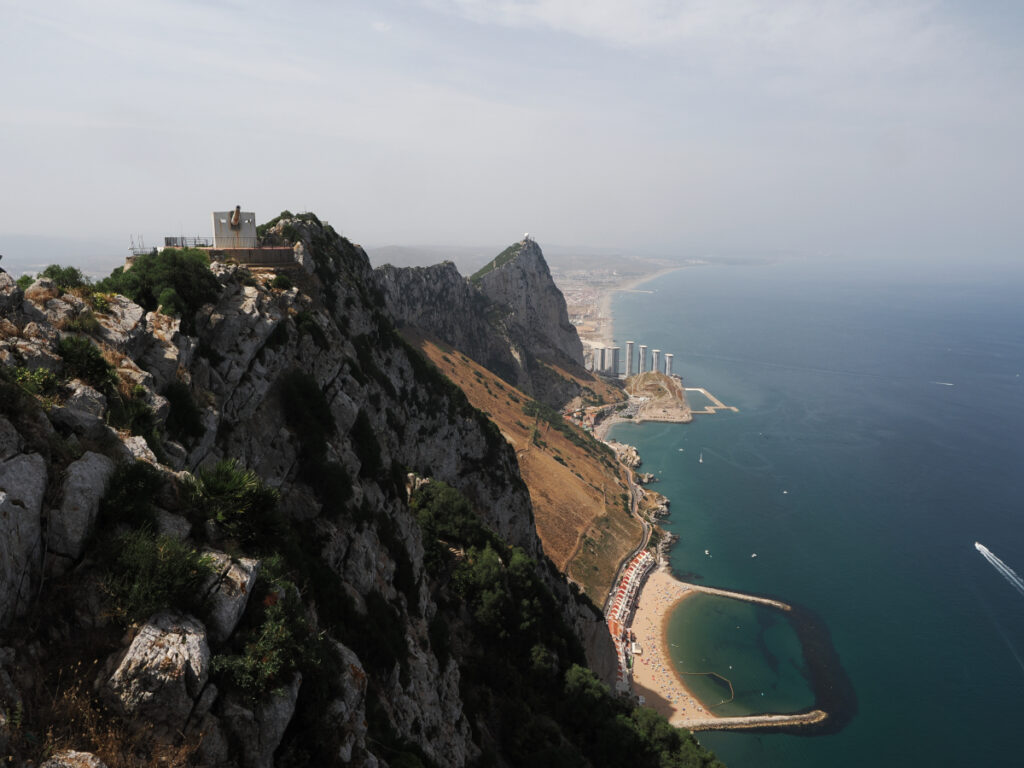
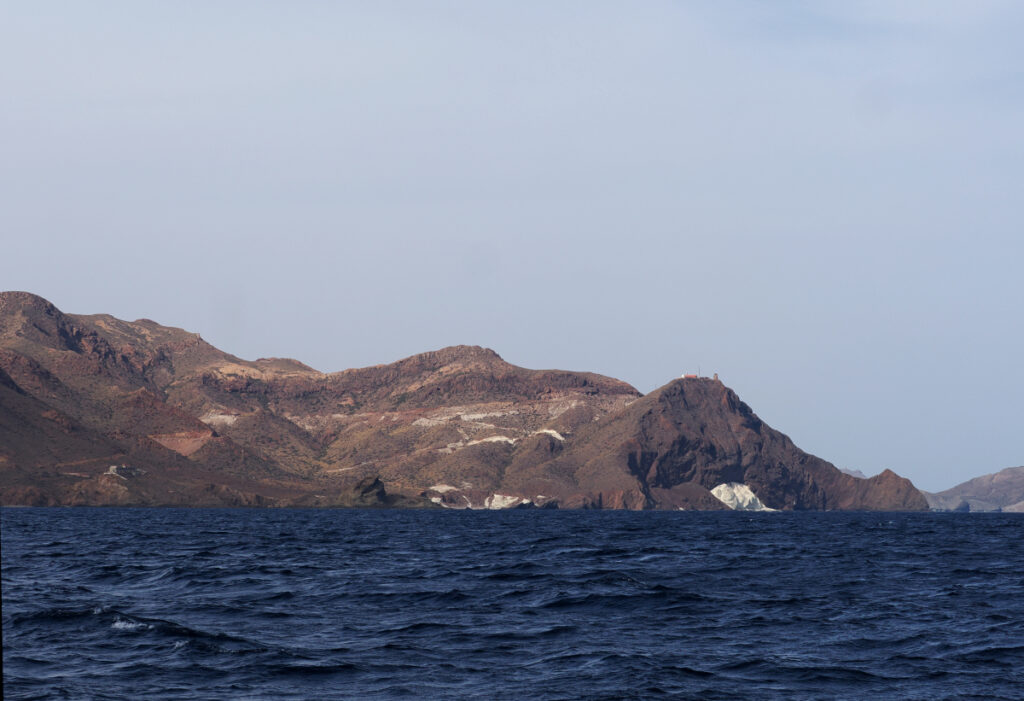
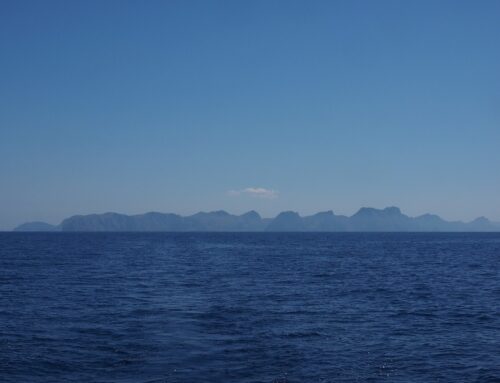

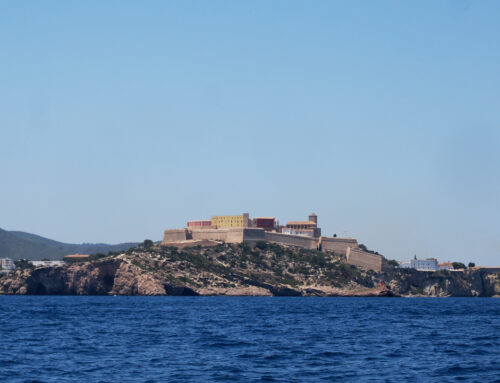
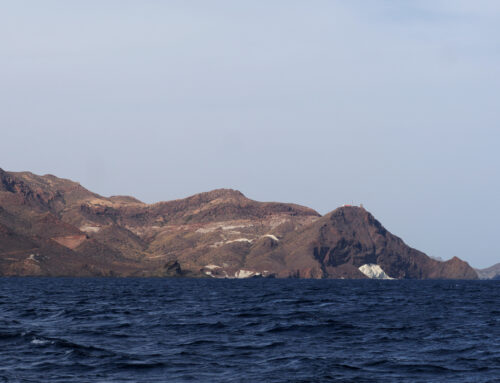
I missed something. What is the 20 m rule ? awaiting for more news.
’20 m rule’ refers to staying within the 20 m depth line in areas where Iberians orcas occur. This is recommended to minimise the chance of encountering orcas.
understood. thanks
safe sailing in corsica